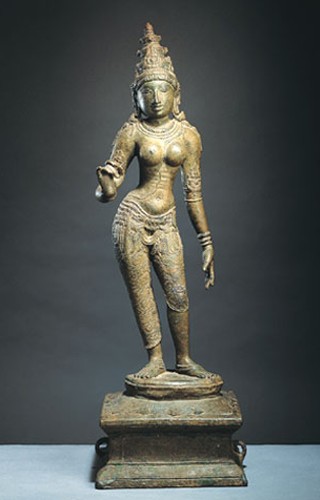Women And Their Curves
I wish to take critical notice of, and commend to the attention of ErosBlog readers, David P. Barash and Judith Eve Lipton’s new How Women Got Their Curves and Other Evolutionary Just-So Stories (New York: Columbia University Press, 2009), which I have just recently finished reading. If you have any interests in the state of our scientific understanding of sex, it’s a book for you.
Barash and Lipton face a set of intriguing conundra when trying to understand why human women are built they way they are. If you think of a woman (a man also, but that’s a subject for another time) primarily in terms of designing working animal plumbing and wiring, you’re going to be in for some rather remarkable surprises once you meet any actual women. Other mammalian females occasionally break down and replace their uterine linings, but only adult human women do so in such a metabolically costly way every month. Why? Most other female mammals openly advertise (at least to other members of their own species) their fertile periods and sexually receptive only then, but for the most part even human women themselves are unsure of when they are fertile. Why? Few other animal species have anything more than traces of female orgasm (and most do not have even that), but in human women orgasm is a gloriously common fact of sexual life. Why? Other female mammals manage to suckle their young just fine without carrying around large adipose deposits around their milk glands all their adult lives. Human women have breasts. Why? Finally, there seems to be no metabolic why an animal’s fertility should cease when it has decades left to live, but any woman who lives long enough will undergo menopause. Again and always, why?
Now refreshingly Barash and Lipton come out right up front and admit they don’t have the answers to any of these questions. They admit that they are collecting conjectures — informed speculations (unless you’re Desmond Morris, in which case, silly speculations) on the questions I’ve laid out above. And on all of these questions there is a lot of conjecture — there’s a little text-box in every chapter for each of them, and in most cases the box has at least ten items. This is fine. Science necessarily begins in conjecture; it is then in careful gathering of data and the willingness to allow your beautiful hypotheses be slain by ugly facts that it distinguishes itself from other, less-reputable forms of epistemic activity.
One notable feature of the conjectures on offer here is that a discerning reader may see the emergence of an increasing number of conjectures having to do with signaling and screening, rather than just plumbing and wiring, as to why women are made the way they are. An example: back when I was a student in high school (the dark ages, I know) the best my biology teacher could come up with for why women have orgasms was a variant of the inelegantly-named “uterine upsuck” hypothesis: female orgasm had something to do somehow with helping sperm get up to eggs and do their baby-making work. The evidence for this conjecture is very weak: it’s basis in physiological data is very thin, and in any event anorgasmic women seem to be just as fertile as orgasmic ones. A much more promising conjecture is that female orgasm is a screening device, something that evolved to help women discriminate between desirable and undesirable mates. (The exposition of this particular conjecture got a favorable notice from economist Robin Hanson, who perhaps deserves the title of Dean of Signaling, over at Overcoming Bias.)
Likewise, female breasts might be signals (whose evolutionary development subsequently got a boost from runaway sexual selection). Since human men provide at least some resources to their offspring (usually) it pays them to be at least a little bit choosy in mate selection. Any human female can say things like “I am young and healthy and therefore a good mate,” whether it’s true or not. But it’s much harder to fake the ability to accumulate and carry around a lot of extra healthy-looking fat, unless you really are young and healthy and therefore a good mate: breasts would therefore be a good example of a costly signal in evolutionary terms, rather like the peacock’s tail.
I cannot help but note another conjecture offered by Barash and Lipton. Obviously I cannot say whether it’s true or not, but I must say it certainly resonates with me. This is a conjecture about concealed ovulation: the fact that usually even women themselves do not know whether they are in a fertile period. This might be called the Consciousness Conjecture, and it was advanced originally by a biologist named Nancy Burley. It runs something like this: sex is fun, pregnancy is not. Pregnancy is especially no fun if you’re a hunter-gatherer on the move much of the time, and what is more, for most of human existence, childbirth was at once excruciatingly painful and often fatal. Women (or proto-women) were conscious and observant and took note of all these facts and would avoid having sex when pregnancy would be likely to result. Concealed ovulation emerged in an evolutionary move that allowed genes to propagate themselves because women wouldn’t know when they were fertile — in short, it evolved out of a conflict between women and their own genes. (Thus an early example of what psychologist Keith Stanovich calls The Robot’s Rebellion.)
A brief review can’t really do justice to all the charms of this little book. Columbia University Press has made an extended excerpt available on the book’s web-page here and the full chapter from which it comes in PDF format here. I would be remiss in reviewing for ErosBlog without including a picture or two. After all, what book on sex and science would be complete without a picture of lions mating? Not this one, clearly.

Kudos to you if you can guess the conjecture about human female sexuality this picture is offered in illustration of!
And naturally, no discussion of women and their curves would be complete without one of those breathtaking south Indian sculptures of Parvati. Barash and Lipton of course offer one (though not exactly this one):

(And if you look up neurologist V.S. Ramachandran’s Reith lecture on the origins of art in the human brain which Barash and Lipton are referencing there, you’ll be rewarded with yet another one.)
I realize of course that a book of biological conjecture about human female sexuality might not be everyone’s cup of tea. “Those silly scientists,” some might say, “they can’t figure out even the commonest things.” But I for one take a different view. Books like this one are evidence that science is nowhere near its end, and that even in the most ordinary (if intimate things), there remain fascinating and deep puzzles to solve.
And I submit that, my dear readers, really is sexy.
Shorter URL for sharing: https://www.erosblog.com/?p=3407








Thanks so much for sharing this book and a glimpse at the contents; curiosity can feed the cat too.
(And thanks for sharing joyous Parvati and the happy lions :) )
This book sounds similar to Natalie Angier’s wonderful “Woman: An Intimate Geography”. Angier, a science writer at the New York Times, researches all of these questions and more, often coming up with no certain answer, but leaving a reader very satisfied that she investigated every possibility along the way. She’s a funny, engaging, memorable writer. Highly recommended.
A fascinating topic.
A look at the anatomical differences between men and women can be helpful. Typically, men have larger brow ridges, more hair, larger muscles, heavier jaws, narrower hips and brows closer to the eyes. compared to women, all of these features could be considered more primitive. Perhaps women have evolved further than men. Why? Certainly many female characteristics are adaptions to having and rearing babies. The broad hips and layers of fat for example are for large headed babies and long term rearing. Perhaps the male brain has evolved to be attracted to females that display potential reproductive success. The selfish gene hypotheses. On the other hand, our big brains may have evolved to enjoy sexual pleasure and women are very good at providing it.
I saw a disturbing program on TV once that conjectured that a man around the turn of the last century successfully impregnated a great ape that birthed a hybrid creature that lived. I don’t remember if they showed photographs but if they did I turned away or changed the channel. I have no idea if the story is true (I hope it isn’t) but it reminds me of a similar fancy tale about ‘space aliens’ interbreeding with proto humans to produce ‘us’. Sci Fi offers thousands of stories of bug eyed monsters coming to eat us; shore leave seems just as likely in these fanciful terms. Drawn out point being that orgasm and reasoning and the ability to blush are probably the distinctions that make us human. Flies have those wonderful compound eyes — we have the ability to sneeze with our privates.
And on the topic of things that I hope aren’t true–has anyone heard data around the notion that women are more apt to get pregnant as a result of a rape? My source for this wasn’t dependable and the idea is distasteful enough that I’ve never bothered to try to get to the bottom of it (I also don’t repeat it in casual conversation because I’ve no interest in adding to the urban legend). I bring it up here because of the reference to orgasm being an aid to impregnation (this notion is the opposite) and because someone in this crowd is apt to know the facts or where to find them. I suspect that orgasm, like memory, is just a lucky ‘fluke’.
Glenn;
An interesting conjecture, that the features you mention could be considered more primitive. I think that male and female humans are exactly equally evolved by definition, but I interpret your conjecture to imply that early women were more physically similar to early men and deviated later while men remained relatively unchanged. I suppose that’s testable. So far as I know dimorphism was an early feature of humans, and I always assumed that other features were similarly distinct, but I’m not an evolutionary anatomist, or whatever they would be called.
Faustus:
I thought this was an interesting post. One thing I wonder: did the authors mention penis size in an evolutionary context? Specifically, I remember reading that penis size in mammals correlated not with body size but with monogamy or lack thereof. Of course, as a man, I would be interested in that, wouldn’t I?
PS: Jaguar; single hit googling results in the information that 4.7% of rapes are ESTIMATED to result in pregnancy. That number might seem precise because it’s 4.7 instead of 5 or 4, but my guess is that it’s extremely imprecise.
http://www.sexi...shtml
gives the odds of pregnancy at about 3% per random unprotected vaginal copulation.
The number of unknow factors here, including sample population makeup, mean, in my judgement, that the numbers are most likely comparable. For obvious reasons, I don’t think there are any reliable studies.
Regarding jaguar’s post, interspecies procreation is impossible. Soviet scientists under Stalin attempted it in an effort to create a better soldier, but were unsuccessful. As far as alien/human hybrids, I find it odd that an alien race could be so advanced that they could zip across galaxies, yet be so ignorant of biology that they hadn’t advanced beyond crude methods of interbreeding.
The conjecture on female adipose fat is interesting.Especialy when you consider what is force fed to males in the media.Sports Illustrated swim suit edition,on the fashion runway in hollywood.Take a look at any billboard with a woman on it,skinny skinny skinny!And yet what realy hits me in the groin and makes me spring uncontrolable wood?A well rounded,padded woman,eminds me of that rap song “Baby Got Back”.Maybe that’s why most women find that song so disgusting.Because so few are capeable of displaying those features and feel they can’t compete?Of course I can’t proove any of this,but………
Thanks for this posting of what looks to be an intriguing book. I’ve spoken with David Barash. He’s a wonderful person–a prof at U of W, very open and supportive.
A similar book is the late Leonard Shlain’s Sex, Time and Power. That’s a very interesting read, in that he sets up each chapter with interesting titles: Woo/I Do; Mortality/Angst; Grandmothers/Circumcision. It’s 6 years old.
Seb: Barash and Lipton don’t much discuss male characteristics in this book, but perhaps that’s forthcoming; one can hope.